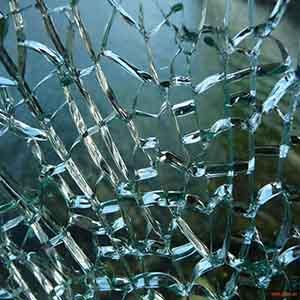Works of glass patch fittings on display
The glass works on display include Osaka Maritime Museum, Changi Airport Terminal 3, Parthenon Gallery in Athens, Pacific Plaza 3 and East Island 1 in Hong Kong.
Structural glass and glass patch fittings have become common components in buildings. In the early 1980s, the RFR team of eter Rice and La Villette carried out early pioneering work in structural glass. The spherical bearing hinge bolts are produced for the suspension of toughened glass and wind resistant truss with cables. The author is lucky to participate in this project and co authored Structural Glass [1] with Peter Rice, describing the development process.

For HDA, what attracts me most is the architectural potential of structural glass and glass patch accessories. At that time, maximum transparency was the goal of our work. Adrien Feinslber, the architect of the museum, hopes that the museum and the park will have an open dialogue and use the south facing bioclimatic facade as a "regional sanitary tampon" between the museum and the park. The glass system consisting of 2 m x 2 m tempered glass panels is suspended from each other using stainless steel investment casting components. The entire space of 8m x 8m is an autonomous structural glass plate gravity supported by the glass itself and uses the glass surface to stabilize the cable system. "Soteras" was developed as a substitute for glass fins. Soteras himself was a pioneering development in nonlinear analysis engineering at that time. HDA's work tries to explore the architectural potential of structural glass, apply it to different environments, and pay maximum attention to architectural information in each case. It is not the expression of technology itself. Recently, the focus on sustainable design has attracted a lot of attention.
The following HDA works are the evolution of the trend of structural glass architecture in our practice. The date of each project corresponds to the design time of each project.
Paul Andreu's 73 meter long glass dome in Osaka Bay shows the city's marine history. And a complete replica of the "Higaki Kaisen" sailboat. HDA proposed a kind of Lamila lattice shell structure for hemispherical dome. The grid enclosure size is based on the maximum glass size, where the four glass panels at the equator are supported by a tubular compression frame. Its internal angle is supported by diagonal bracing "X" cross node.

Nighttime Reflection of Lamella Reticulated Shell and Laminated Metal Sandwich in Osaka Museum
In addition to the structural characteristics of the dome, the glass design also uses innovative laminated glass. To minimize solar radiation. The perforated steel interlayer is introduced into the laminate. The laminate has variable holes sized according to sunlight.
The concept of variable and relative transparency in the project is realized through perforated grids, and the surrounding sea view can be seen from the dome during the day and at night. On the contrary, due to the performance of the grid in reflecting sunlight, the view into the dome becomes blurred during the day. Similarly, at night, the grid acts as the ceiling, reflecting the internal light of the space, rather than the black sky scenery. This completely passive transparency control method is similar to the traditional lace curtain on the window, but takes advantage of the fact that transparency is a function of relative light intensity. The eyes always see the brightest place. In other words, it is outside the dome during the day and inside at night.

The third phase of Swire Plaza is a 40 storey office building, which is a new extension of the shopping and office building of Swire Real Estate. It is located at the junction of Central Business Office District/Administrative District and Wanchai Community. The architectural goal of the base platform is to maximize openness and transparency, so that the tower can be integrated with the surrounding small-scale environment.
The 20m high suspended structural glass curtain wall is supported by three-dimensional cable net. The net is composed of a series of convex curved vertical cables tensioned by concave horizontal cables. The vertical cables are connected to the ceiling and floor, while the horizontal cables are connected to the columns. Corners are complex situations where there are multiple re entrant glass planes. The grid system responds to individual situations by adjusting its geometry to suit the support conditions while still providing wind load support for the suspended glass.
The airport is the front door of Singapore, and its facilities are constantly modernized, with the image of a garden city country. With the assistance of SOM in New York, the local architectural team CPG worked with Hugh Dutton Associates (HDA) to design the facade of the building. The design aims to express the contemporary image goal of CAAS, combined with appropriate themes
 English
English Russian
Russian




